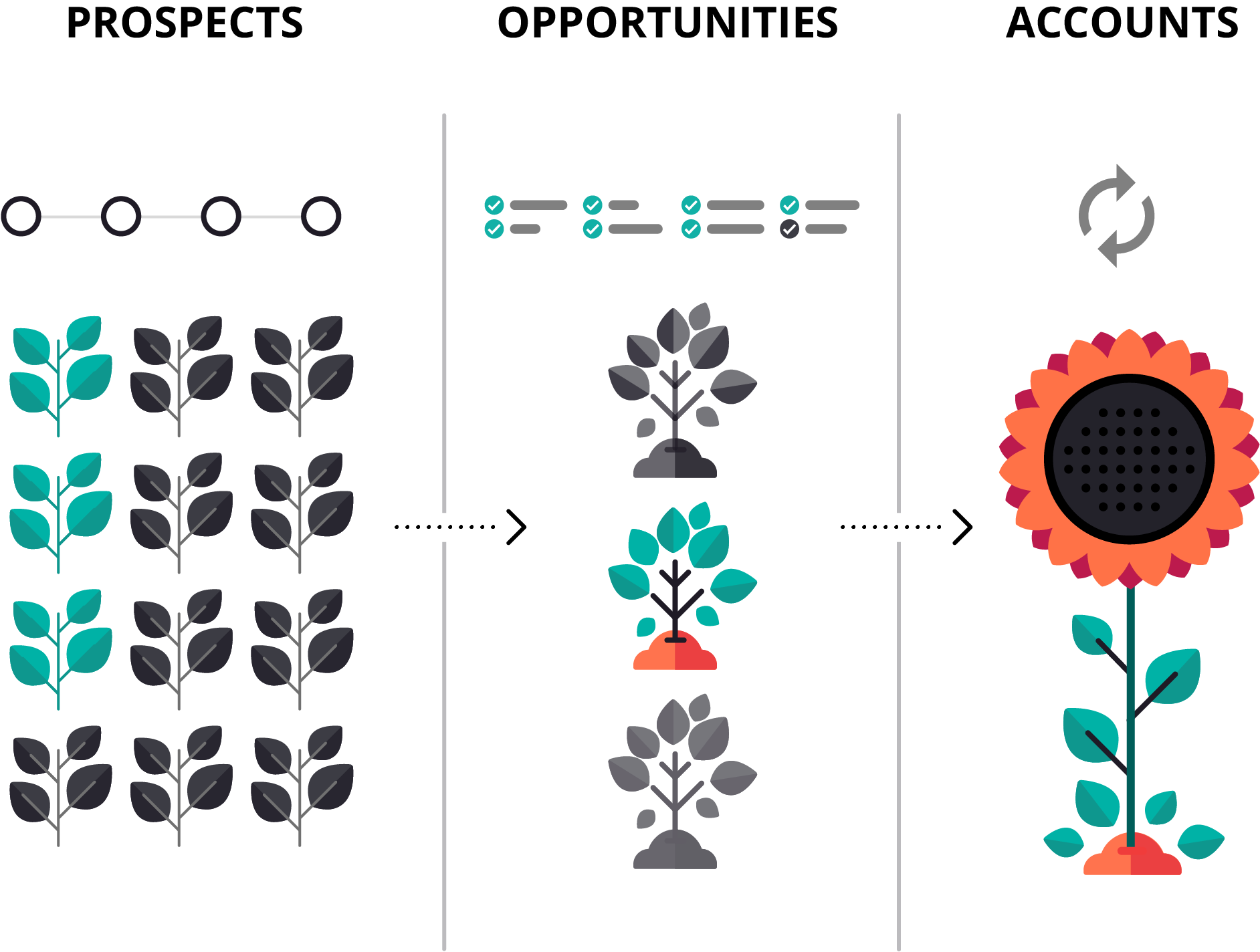
If you have leads in your sales pipeline, you’re doing it wrong
What happens when one of your salespeople obtains a new lead? Do they instantly begin working it like an opportunity in your CRM? Do they work the lead for a while before putting it into the pipeline? Do they wait until they are sure they’re going to win the deal and then plug it into the pipeline so they can look like a hero?
If you’ve been in sales for long, chances are you’ve seen it done any number of different ways. Unfortunately, all of these approaches cause problems. For instance - how do you reliably measure and benchmark KPIs like win rates and sales cycles if salespeople take different approaches? You can’t. And we see it all the time, in small to large companies. Fortunately, there’s a better way.
Why throwing leads into the pipeline is wrong
Some salespeople enter every lead into the pipeline as soon as it appears. This has one benefit: everything is documented and you can see how many leads are coming in.
But it also causes more problems than it solves. When the pipeline is cluttered with leads, it can really mess with your KPIs, and make it hard to see what really matters. It will create a false sense of security, as your pipeline value will go up. And it will lower your salespeople’s effectiveness, as they will spend too much time on unqualified leads.
Why waiting too long to enter leads is wrong
Some salespeople wait until they are almost sure that the lead will close before entering them into the pipeline. This has the advantage of keeping the pipeline cleaner.
But it also means you might not have good visibility into what is going on with the leads. And it will mess with your KPIs by making it impossible to compare apples with apples.
Why using additional software is wrong
Some teams, recognizing the problems with the first two approaches, attempt to solve it by implementing software designed specifically for lead management and prospecting, separated from your CRM.
This approach has many advantages, but one big disadvantage - apart from being yet another tool your team needs to learn how to use - is that it creates a disconnect between your prospecting data and your opportunity management and account growth data.
You can't benchmark sales effectiveness without clearly defined workflows.
As a result, you can have the same lead entered into both platforms, with limited visibility from one platform while in the other. This becomes an even bigger problem when you have contacts from within the same organization at different stages of their engagement with your company. You may have an established relationship with the organization, with different contacts at different stages of the buying process.
One contact will be in your prospecting platform, but not within your opportunity management or account growth platform. As a result, you have no way to leverage existing relationships or to avoid duplicating efforts. Also, in some systems, converting a lead into an account or an opportunity can cause duplicate entries, further messing with data quality as well as forecasts.
The solution is separate workflows within the same platform
The way you work when prospecting is different from how you work when managing a qualified opportunity. Prospecting has a higher pacing, with high activity and low conversion rates. It’s all about getting to that first conversation and tends to be activity-focused.
Once a prospect is qualified into an opportunity (we call them sales projects,) the pace slows down and you need a different rhythm and approach. You’ve determined that you can help them, and the focus becomes getting everyone involved, understanding how important the project is for them, and identifying the best solutions for them, as well as identifying the competition and any other obstacles in the way.
Once an opportunity makes a purchase and enters the delivery and account growth stage, the pace slows down even more as the relationship deepens. This, too, requires a different work approach, focused on customer success and identifying new opportunities over time.
In Membrain, we designed three separate workflows within the same platform to account for these different approaches while allowing all your data to remain connected.

Membrain's workflows, specifically tailored for engaging prospects, winning sales projects, and designing account plans and delivering customer success for growth.
Our prospecting workflow is designed to help you manage your leads and engage with them in a productive and efficient manner. Once they are qualified, they enter the opportunity management workflow. When an opportunity becomes a customer, they enter the account growth workflow.
This means that your data is connected, but you can analyze and visualize it separately for each workflow. It also helps your sales and customer success teams coordinate their efforts and manage their workflows effectively. And it reduces the “point pollution” and Hydra problem which is commonplace when using a traditional CRM system with multiple add-ons.
Each workflow has a signature visualization
To help sales teams visualize their work, each workflow within Membrain is associated with a different visualization. In prospecting, focus is given to a disciplined number of touches. For your pipeline, you see a clear Kanban board of both the size of the pipeline, but also the health of each, and you're guided by a visual sales process. For your accounts, we provide the "Growth Grid" to help you see where you have the most potential to grow with existing customers.
This helps sales teams and their managers see at a glance where their priorities are for each workflow, so they can spend their time executing on the plan.
Some companies opt to start with only one of our workflows, to accommodate their greatest internal need. Many later upgrade to use all three. Whatever your need, we have a free trial available for you to see how it fits the way you work. Feel free to book a call with us to explore how Membrain can help increase your sales effectiveness.

By George Brontén
George is the founder & CEO of Membrain, the Sales Enablement CRM that makes it easy to execute your sales strategy. A life-long entrepreneur with 20 years of experience in the software space and a passion for sales and marketing. With the life motto "Don't settle for mainstream", he is always looking for new ways to achieve improved business results using innovative software, skills, and processes. George is also the author of the book Stop Killing Deals and the host of the Stop Killing Deals webinar and podcast series.
Find out more about George Brontén on LinkedIn







